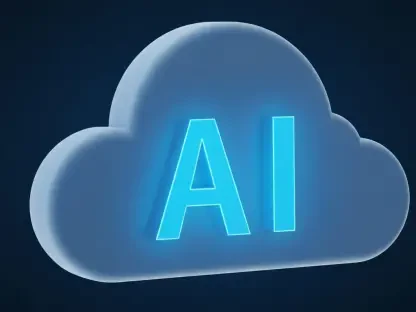Data visualization has significantly revolutionized campus recreation departments by transforming extensive and often unwieldy data sets into comprehensible and engaging visuals. This facilitates more effective decision-making and advocacy efforts. While modern recreation management software systems have simplified the process of data collection, the task of utilizing this vast data effectively still presents a challenge for many departments. Data dashboards offer an innovative solution by organizing these large quantities of data into visually appealing and easily digestible formats, making the storytelling of campus recreational success much more engaging and impactful for university stakeholders.
The Power of Data Visualization
Dashboards play a crucial role in summarizing related yet distinct data sets into a cohesive and easily understandable visual narrative. Platforms like Tableau and Power BI are at the forefront, enabling campus recreation departments to generate detailed, real-time dashboards essential for strategic decisions, advocacy, and annual comparisons. These dashboards significantly elevate the assessment process, making data-driven insights more accessible for stakeholders across the university. The visual representation of data not only simplifies complex information but also enhances the credibility and persuasiveness of the data, driving more informed decision-making within campus recreation departments.
The ability to visualize and analyze data in real-time helps departments remain agile and responsive to emerging trends and challenges. By regularly updating dashboards with new data, campus recreation professionals can monitor trends, measure success, and make timely adjustments to programs and initiatives. Moreover, these dashboards provide a clear and compelling way to communicate the value and impact of campus recreation to university leaders, funders, and other stakeholders. This, in turn, fosters greater transparency and accountability, strengthening the position of campus recreation within the broader institutional framework.
Practical Applications and Success Stories
The University of Connecticut (UConn) and Montclair State University serve as exemplary models of effective dashboard implementation and usage. Over the past two years, UConn’s campus recreation department has embarked on an initiative to develop and refine their dashboards, resulting in tools that support both day-to-day decision-making and long-term storytelling. These dashboards have allowed UConn to present a clear and data-driven narrative of their impact, which has been instrumental in securing support from university leadership and external stakeholders.
Montclair State University has also made significant strides in leveraging dashboards to monitor student and patron demographics, informing their decision-making processes and enhancing their ability to communicate effectively with diverse audiences. Despite encountering challenges such as identifying key performance indicators and securing buy-in from colleagues, the department has persevered and continues to improve their dashboard capabilities. One of the key lessons learned from Montclair’s experience is the importance of flexibility and adaptability in the face of obstacles. By remaining committed to the goal of improving data visualization and storytelling, the department has been able to overcome challenges and achieve meaningful progress.
Overcoming Challenges in Dashboard Development
Developing effective dashboards inevitably presents several challenges, with data accessibility being one of the most prominent. While some data may be readily available through management software systems, other crucial pieces of information may require specific requests and permissions from various institutional departments. Navigating this complex landscape often involves overcoming bureaucratic hurdles and ensuring that all necessary data is obtained in a timely manner. The process of data collection and integration can be time-consuming and demanding, but it is a critical step in creating dashboards that are both comprehensive and reliable.
Another significant challenge lies in the selection of data to include in the dashboards. It is vital to prioritize data that best serves the department’s goals and supports effective storytelling through data visualization. This involves identifying key performance indicators (KPIs) that align with the department’s strategic objectives and resonate with stakeholders. Overloading dashboards with too much information can be counterproductive, as it may obscure critical insights and make the visualizations less impactful. Therefore, careful consideration and strategic planning are essential in deciding which data sets to highlight and how to present them in the most compelling way.
Collaboration and Effort in Dashboard Creation
Creating and maintaining effective data dashboards requires a collaborative effort between campus recreation staff and information technology (IT) professionals. Campus recreation personnel bring the necessary domain knowledge and familiarity with the data, while IT experts provide the technical expertise in data integration, dashboard construction, and troubleshooting. This collaboration is crucial for ensuring that the dashboards are not only visually appealing and user-friendly but also technically robust and reliable.
The initial stages of dashboard development are particularly labor-intensive, demanding significant time and effort from all involved parties. Departments must be prepared to invest considerable resources into conceptualizing and building functional and informative dashboards. This involves iterative testing and refinement to ensure that the dashboards meet the department’s needs and provide accurate, actionable insights. The commitment to this development process is crucial for the long-term success and sustainability of the dashboard initiative.
Despite the substantial effort required, the payoff can be immense. Effective dashboards empower campus recreation departments with valuable data-driven insights, enabling them to make more informed decisions, improve program effectiveness, and demonstrate their impact to stakeholders. By fostering strong collaboration and dedicating the necessary resources, departments can develop dashboards that serve as powerful tools for strategic planning and continuous improvement.
Benefits of Data Dashboards
The numerous benefits of data dashboards for campus recreation departments are evident in their ability to provide concrete evidence for informed decision-making. By presenting hard data rather than relying on estimates or anecdotal evidence, dashboards offer reliable and objective information that can guide more effective choices. This data-driven approach not only enhances the credibility of the department’s decisions but also fosters greater confidence among stakeholders.
Dashboards also offer valuable insights into patron demographics, enabling departments to identify and respond to emerging trends that might otherwise go unnoticed. By analyzing data on student participation, program preferences, and facility usage, departments can tailor their offerings to better meet the needs and interests of their diverse user base. This targeted approach can lead to more engaging and successful programs, ultimately enhancing the overall student experience.
In addition, the accessibility and utility of dashboards make them valuable tools for communicating with various audiences. Whether presenting to prospective students, current participants, or university administration, dashboards provide a clear and compelling way to showcase the department’s impact and success. This ability to effectively convey data-driven narratives can strengthen support for campus recreation initiatives and foster a greater sense of community and engagement.
Streamlining Compliance and Reporting
Another significant advantage of using data dashboards is their ability to streamline compliance and reporting processes. Dashboards organize data in a way that simplifies the task of meeting divisional and university reporting requirements. The structured and regularly updated data provided by dashboards make it easier to compile reports and assessments, saving time and reducing the likelihood of errors. This efficiency not only supports day-to-day operations but also enhances the department’s ability to demonstrate accountability and transparency.
Regular updates to the dashboards ensure that the data remains current and relevant, facilitating ongoing assessment and continuous improvement. By providing a reliable source of information, dashboards support informed decision-making and help justify departmental expenditures. This streamlined approach to compliance and reporting can lead to more efficient use of resources and better alignment with institutional goals and objectives.
Recommendations for Success
Data visualization has profoundly transformed campus recreation departments by converting large and often cumbersome data sets into clear and engaging visuals. This change supports more efficient decision-making processes and strengthens advocacy efforts. Although modern recreation management software has streamlined the data collection process, effectively utilizing this vast amount of information remains a challenge for many departments. Data dashboards provide an innovative solution, organizing these large data sets into attractive and easily understandable formats. This makes the storytelling of campus recreational achievements far more compelling and impactful for university stakeholders. By making complex data more accessible and engaging, departments can better highlight their successes, identify areas for improvement, and make more informed decisions. Ultimately, these visual tools enhance the overall effectiveness and visibility of campus recreation programs.









